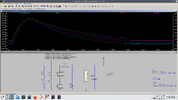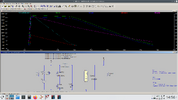It is pretty hard to cover all the nastiness from ISO 16750-2-2010E, and especially so when replacing a blown fuse is not desirable.
How about this approach ?
The relay armature will take some 5-ish ms to operate, which is less than the 24.4V TVS clamp can take.
I think some extra resistance will be needed ("possibly R") because i would like to use an automotive relay and these are rated for 12-16V, not 24.4V. I do want to drive it hard for a fast changeover; this relay will not have to operate more than maybe 10 times during the lifetime of a vehicle, so if it can take all those 24.4V I would not worry about # of cycles reduction.
Q1 will be operated by a MCU which interrupts on a threshold rising voltage, fast enough for the whole thing to cut off in much less than 10 ms and so the TVS clamp survives. When the surge disappears the MCU will eventually command Q1 again and operation is reestablished.
I expect this to work for a few years, but does it stand any chance to still work in 10 - 15 years ? Of course, the relay will spend 99.9999% of its life in its NC position. I wonder if an automotive relay will still be able to break the circuit after such a long time during which it has not clicked once.

How about this approach ?
The relay armature will take some 5-ish ms to operate, which is less than the 24.4V TVS clamp can take.
I think some extra resistance will be needed ("possibly R") because i would like to use an automotive relay and these are rated for 12-16V, not 24.4V. I do want to drive it hard for a fast changeover; this relay will not have to operate more than maybe 10 times during the lifetime of a vehicle, so if it can take all those 24.4V I would not worry about # of cycles reduction.
Q1 will be operated by a MCU which interrupts on a threshold rising voltage, fast enough for the whole thing to cut off in much less than 10 ms and so the TVS clamp survives. When the surge disappears the MCU will eventually command Q1 again and operation is reestablished.
I expect this to work for a few years, but does it stand any chance to still work in 10 - 15 years ? Of course, the relay will spend 99.9999% of its life in its NC position. I wonder if an automotive relay will still be able to break the circuit after such a long time during which it has not clicked once.



